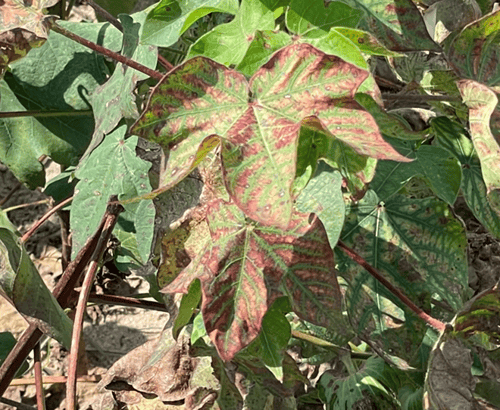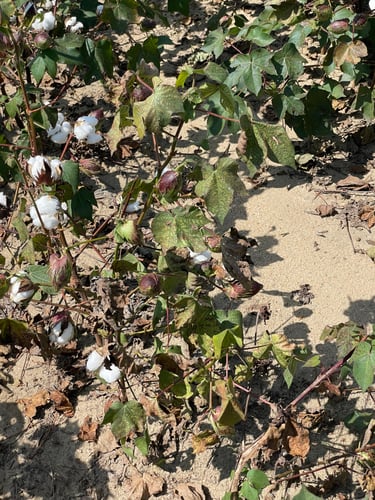August 14, 2023 - There has been a lot of talk about nematode damage on cotton this year. But how much can a microscopic pest really impact your yields? Using a stylet, nematodes damage roots by either stinging or feeding off them which reduces the plant's ability to absorb water and nutrients. This can lead to stunted growth, wilting, and reduced yield. So what is a cotton grower to do when faced with this invisible nuisance? Develop an Integrated Pest Management (IPM) plan.
Looking for Signs of Nematodes:
A grower must start by determining if nematodes are present and at threshold levels in their fields. The relative cost of nematode soil tests can be expensive, so most growers will concentrate on the problem areas they have observed throughout the growing season. The best time for cotton growers to survey their fields for symptoms of an underlying nematode problem is August and September. At this time of year, the crop is still alive and filling bolls, but can be more susceptible to environmental stresses that can help identify problem areas. One of the easiest ways to do this is by getting a birds-eye view and noting these areas for further investigation. One symptom growers should look for is interveinal chlorosis or “Tiger Stripping.” This is usually caused by a nutrient deficiency coupled with damage from plant parasitic nematodes:

Finding areas like this should be an automatic nematode sample site after harvest. Nematode-affected spots can be small and localized, affecting only every other plant, they can span large areas of the field, or even infest the entire field itself. Growers should also consider the field history of nematode control measures that were used, if any, to determine higher-pressure fields.

Time to Sample:
The recommended time to sample nematodes is right after the pickers have moved through the field. I would recommend having the stalks mowed or chopped before sampling to make it easier on the sampler and equipment.
So how do we go about taking the samples? When you get to the field, use a standard soil probe to take a sample in the row where the mowed cotton stalks are. Walk all around the area of interest pulling samples randomly to get a good representation of the field. Pull 10-15 cores per sample and put them into a bucket. Next, mix the bucket around, pour the contents into a sealable Ziplock bag, and place the bag in the nematode bag from the soil testing lab.
TIP: One very important thing to remember when sampling for nematodes is that nematodes are living roundworms and they need to remain alive to be extracted and counted. If you leave them on the dashboard of a truck in direct sunlight while eating lunch, they will die. This is important to remember when shipping soil samples. Try and take your samples at the beginning of the week so you can overnight them to the testing facility and the nematodes won't perish in transit.
So you Have Nematodes? Now What:
Growers have many different tools to combat these voracious pests including resistant varieties, seed treatments, in-furrow nematicides, and granular nematicides. Resistant varieties have been specifically bred to resist nematode infestations and are becoming a widely adopted option. Seed treatments can be effective as they can prevent nematode damage during the early stages of growth. Granular nematicides have been proven to be an excellent nematicide for controlling nematodes in cotton but can be highly toxic to applicators. In-furrow nematicides are a good option for growers and they give them the ability to treat certain areas and fields with nematicides in and around the seed.
One in-furrow nematicide that growers have been seeing excellent results with is Averland FC from Vive Crop Protection. A safer, more economical way to combat nematodes, Averland FC offers cotton growers the peace of mind that they are getting nematode protection right from the start in an easy-to-use solution. In small plot research trials, Averland FC was evaluated against AgLogic 15g (Aldicarb) and Velum nematicide. Averland FC had comparable, if not greater, activity reducing plant parasitic nematode counts over competitive products and untreated checks, leading to high yields and ROI.
Don't let nematodes destroy your cotton! Soil sampling is the first step to determining whether or not nematodes are a problem in your field so get out there and get sampling!
By - George Huckabay; Southern Technical Sales Agronomist
